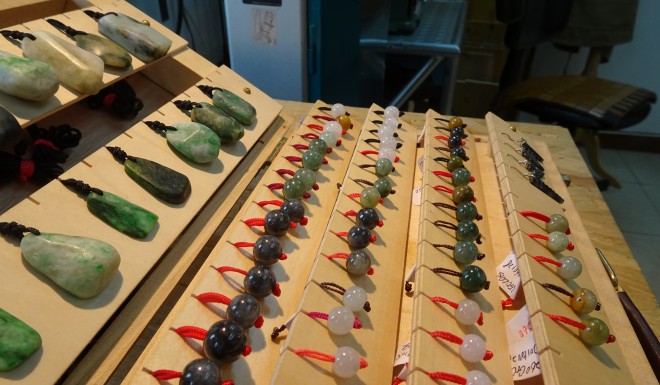
Eddy Tam Ho-yin Breathes New Life Into Jade Art
The 25-year-old founder of Little Jadeite spices up the traditional stone with contemporary designs and surprising materials.
How did the idea of contemporary jade jewelry come about? Before I started Little Jadeite last year, I did a social experiment at PMQ: I set up a stall, displayed a few pieces of unpolished jade, and asked people how much they would pay for them. In the end, no one quoted a high price. That’s when I realized: without all the effort and artistry, jadeite is nothing more than a piece of stone.
Of all the precious stones, why jadeite? The funny thing about jadeite is that the more you wear it, the more translucent it gets. It’s not magic—it gets glossier by absorbing the oil from our skin. Conversely, it dulls when you stop wearing it. It’s like it has a life of its own.
Jade jewelry is everywhere in Hong Kong. What makes yours special? Hongkongers and jade go way back. During the Chinese Civil War, many jade merchants fled to Hong Kong and took refuge on Canton Road, which is where you’ll find the largest jade market in the city. Jade was all the rage during my parents’ days. But nowadays people think jade jewelry is old-fashioned. I’m breathing new life into the art form, by incorporating brass into my jewelry to give my designs a younger look. It cost me a few stones to get it right.

But why take the risk with this “old-fashioned” craft? It was a tough call. I think only one in 10 design graduates would choose a career based on a traditional craft. I mulled over the idea for two months before making up my mind to do it. I feel somewhat obliged to continue the legacy of local craftsmanship. Maybe this has to do with my father’s trade too—he’s actually a jade carving master. Hong Kong is starting to lose its craftsmen and soon everything will be imported if we don’t do anything about it. That’s why I started Little Jadeite—with less than $4,000 in my bank account. I also had to invest in my tools, so that meant living on cup noodles. I tried selling pieces at lunar new year fairs, but my income was unpredictable. Luckily my dad has been very supportive. Most of my knowledge of jade came from him. I may not make a lot of money, but at least I’m doing my part to preserve a piece of Hong Kong.
Do you work alone? My girlfriend Nana doubles as my business partner. She does all the administrative work. She’s pretty organized. I guess it’s common for girlfriends to help out because most business start-ups like mine wouldn’t have the money to actually hire somebody. We met during my Final Year Project presentation and we started going out straight away. Nana was also the one who talked me into starting Little Jadeite. She said I would definitely regret it if I didn’t.
Do you think Hongkongers have an eye for design? Hong Kong people have grown used to a ready-made kind of aesthetics: They don’t have time for the stories behind the products they’re using. When you know how much effort goes into the things you’re using, you see things in a different light. People tend to think that designers are supposed to be “cool” and that it’s all about being stylish. But in reality, we product designers are no more than technicians with a bit of creativity.
You’re a good-looking guy—why did you choose such a low-profile occupation? Some of my relatives have asked me the same question. The thing is, I’ve always been an introvert, so I feel more at ease working behind the scenes. Besides, people come here for my designs, not my face.

